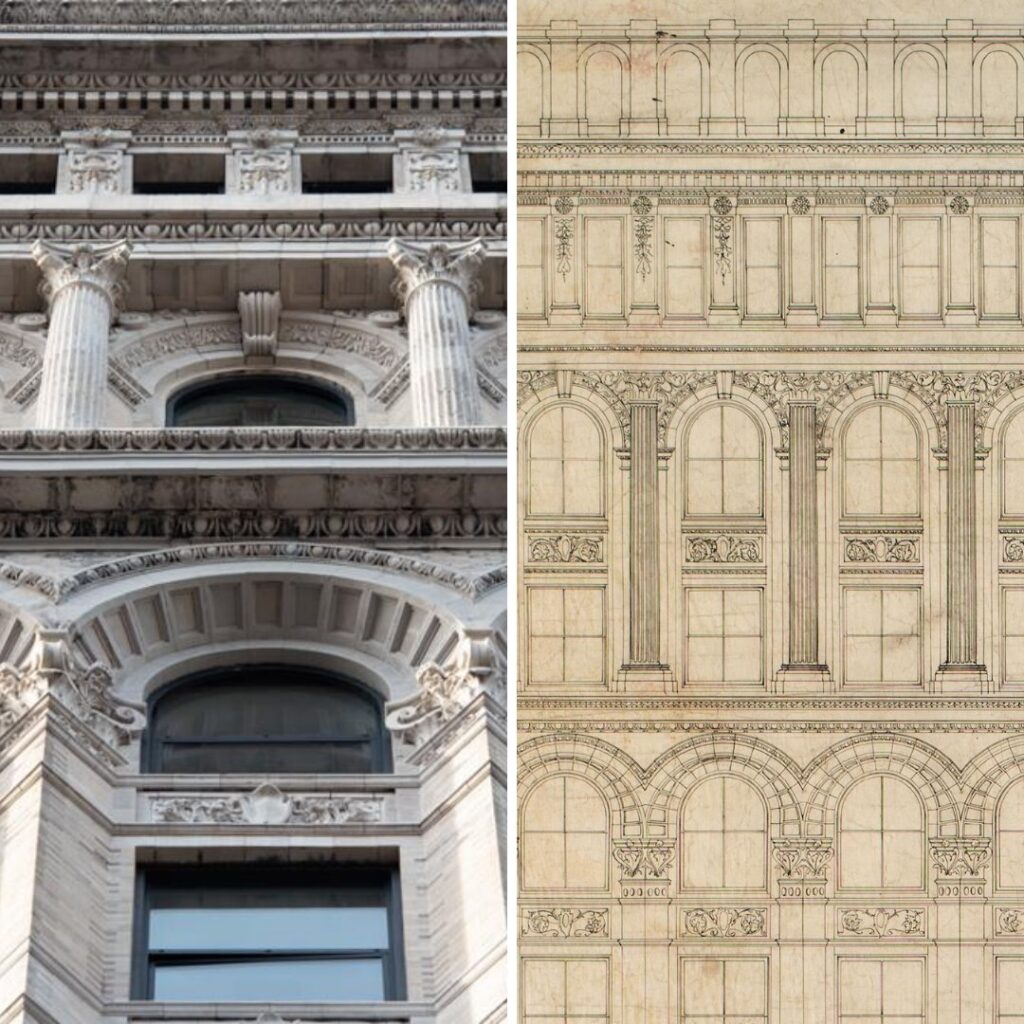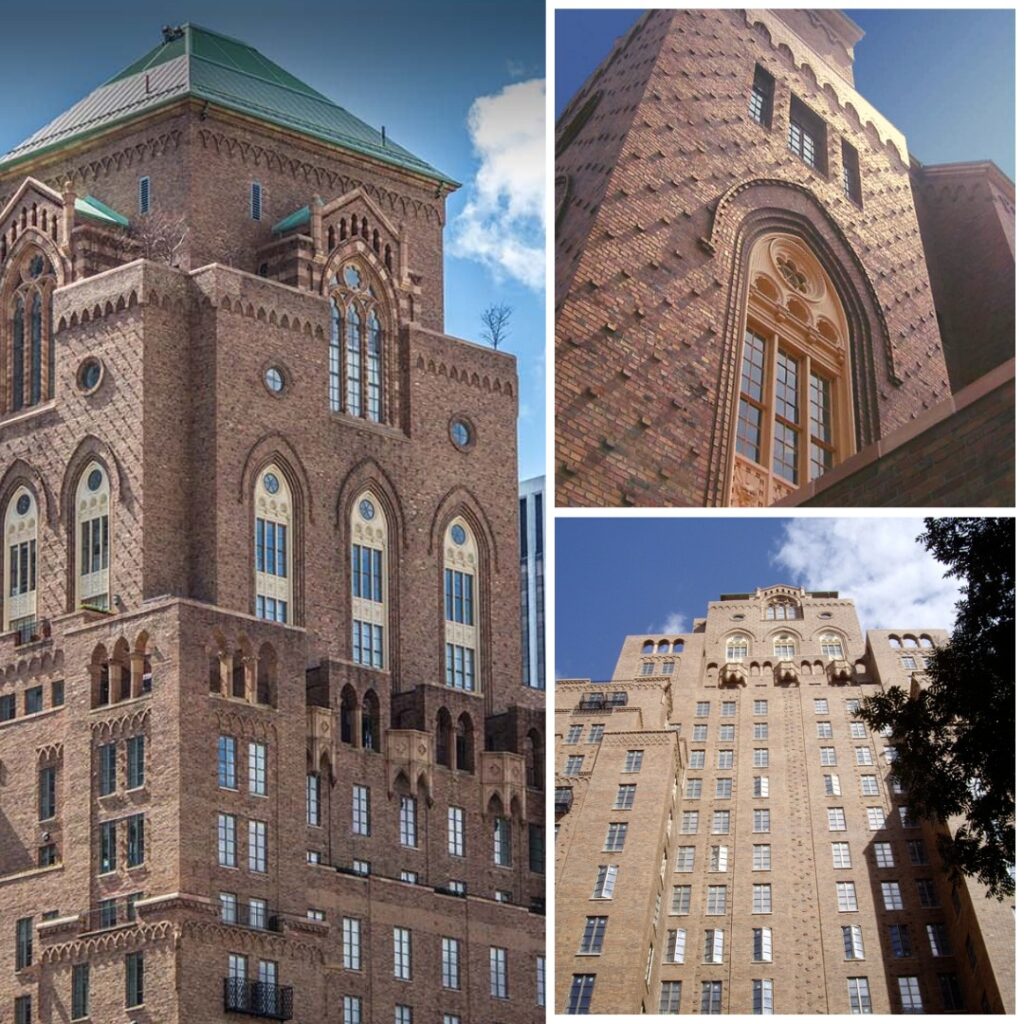Imagine walking through a city and stumbling upon a historic building. The walls whisper tales of bygone eras, but what often captures our attention first? The windows. Just like eyes are the windows to the soul, the windows of a building are its eyes to the world. Now, think of these windows made of steel. Steel windows have played a pivotal role in shaping the aesthetics of historic buildings for ages. They’re not just any windows; they’re a testament to the artistry and craftsmanship of the past. At our website, we believe in the preservation and restoration of these architectural gems. Why? Because restoring a steel window is like polishing a diamond; it might have gathered dust over the years, but beneath that lies its original brilliance.
In the journey of historic building restoration, the window frame, especially the steel frame, holds a special place. It’s like the sturdy spine of a well-read classic book. And just like a book might need a new binding or a page repair, these windows too might need some love and care. Whether it’s a sash that needs fixing, a frame that’s seen better days, or a casement that’s lost its charm, we’re here to guide you through it all.
But, before we dive deep into the world of steel windows, let’s take a moment to appreciate their role in historic preservation. Think of them as the guardians of history, standing tall against the test of time, weather, and more. Ready to embark on this journey with us? Let’s explore the magic of steel windows in historic building restoration.

Historical Context of Steel Windows
When we think of historic buildings, it’s easy to picture grand facades and intricate details. But, have you ever wondered about the stories behind those steel windows? Let’s take a stroll down memory lane.
In the architectural world, windows are akin to the ever-evolving fashion trends. Just as bell-bottoms had their heyday in the ’70s and made a comeback recently, steel windows too have had their moments of glory, decline, and resurgence. The use of steel in windows began as an innovative solution to the limitations of wood windows. Imagine trying to fit a large pane of glass into a wooden frame; it’s like trying to put a square peg in a round hole. Steel, with its strength and flexibility, became the go-to material, especially for larger windows in historic structures like warehouses and factories.
Detroit, a city well-known for its rich industrial history, saw a boom in the use of steel windows during the early 20th century. These windows were not just functional; they were a symbol of modernity and progress. The rolled steel used in these windows provided the perfect balance between durability and elegance. And it wasn’t just about the frame; the sash, casement, and even the glazing were all designed with precision.
However, as with all things, steel windows faced challenges. Corrosion and rust became common issues, especially in areas with high humidity. But, just like a knight in shining armor, contractors and architects came to the rescue. They introduced techniques to preserve and restore these windows, ensuring they retained their historic charm while meeting modern standards.
One might wonder, why not just replace them? Well, replacing a steel window in a historic building is like replacing the lead actor in a classic movie. The essence is lost. Preservation and restoration became the mantra for many building owners and preservationists. After all, these windows have witnessed history unfold, and it’s our task to ensure they continue to do so.
Characteristics of Steel Windows in Historical Buildings
Steel windows are like the Swiss Army knives of the architectural world. They’re versatile, durable, and undeniably charming. But what makes them so special, especially in historic settings? Let’s peel back the layers.
- Durability and Longevity: Think of steel windows as the superheroes of the window world. They’re tough, resilient, and can withstand the test of time. Unlike wood windows, which can deteriorate over time, steel stands strong against elements like rust and corrosion when properly maintained. It’s like comparing a sturdy oak tree to a delicate flower; both are beautiful, but one is undeniably more resilient.
- Aesthetic Appeal: Steel windows are the little black dresses of historic buildings. Timeless, elegant, and always in vogue. Their slender frames and sashes allow for larger panes of glass, offering unobstructed views and flooding interiors with natural light. It’s like having a clear canvas where the world outside paints its ever-changing picture.
- Versatility in Design: From the grand casements of European castles to the sleek designs of modern lofts in Detroit, steel windows adapt. They can be molded, bent, and shaped to fit any architectural style. It’s akin to a chameleon, seamlessly blending into its surroundings while still standing out.
- Thermal Efficiency: Here’s where the magic of modern restoration comes into play. Historic windows can be upgraded for better thermal performance. Think of it as giving an old car a new engine; the exterior retains its vintage charm, but the insides are revved up for today’s needs. The thermal upgrading of historic steel windows ensures that the interior remains comfortable, without compromising on the window’s historic integrity.
- Preservation of Integrity: Every steel window in a historic building tells a story. Whether it’s the artisan who crafted the frame or the events the window has witnessed, there’s history embedded in every inch. Preservation ensures that this history remains intact, like carefully preserving a handwritten letter from a bygone era.
In essence, steel windows are more than just openings in a wall. They’re gateways to the past, blending seamlessly with the present, and paving the way for the future. And as we delve deeper into the world of restoration and preservation, it becomes evident that these windows are treasures worth cherishing.
The Restoration Process: Challenges and Solutions
Restoring a steel window is like restoring a classic painting. It requires a delicate touch, an understanding of the material, and a deep appreciation for its history. But, as with any restoration task, challenges arise. Let’s dive into the world of steel window restoration and see how we tackle these challenges head-on.
- Assessing the Condition: Before diving into any repair work, it’s crucial to assess the state of the steel window. Just as a doctor wouldn’t prescribe medicine without a diagnosis, a contractor or architect needs to identify issues like rust, corrosion, and deterioration. This step ensures that the restoration process is tailored to the window’s specific needs.
- Techniques for Restoring Steel Windows: Imagine you’ve found an old, tarnished silver necklace. You wouldn’t just toss it out, right? You’d polish it, maybe replace a missing gem, and restore its original shine. Similarly, steel windows might need cleaning, repainting, or even replacement of parts. Techniques like stripping off existing paint, treating areas of rust, and reapplying a protective primer and finish paint can bring a window back to life.
- Modern Advancements: Just as technology has revolutionized our daily lives, it’s also brought innovations to the restoration world. From weatherstripping to improve insulation to advanced sealants and caulks that protect against infiltration, the modern contractor has a toolkit filled with solutions.
- Ensuring Historical Accuracy: This is where the art and science of restoration meet. While it’s essential to incorporate modern benefits, like thermal upgrading of historic steel windows, it’s equally crucial to preserve the window’s historic essence. It’s a bit like restoring an old film; you might enhance the colors and sound, but the original storyline remains untouched.
- Collaboration is Key: Restoration is not a solo endeavor. It involves collaboration between building owners, contractors, architects, and sometimes even institutions like the National Park Service. Together, they ensure that the restoration process aligns with preservation briefs and maintains the building’s character-defining features.
In the grand tapestry of historic building restoration, steel windows are the intricate threads that add depth and beauty. And while challenges arise, with the right approach, tools, and passion, these windows can shine brightly, just as they did in their heyday.

Benefits of Restoring Steel Windows in Historical Buildings
Restoring steel windows in historic buildings is akin to giving a vintage car a fresh coat of paint and a tune-up. Not only does it enhance its beauty, but it also ensures it runs smoothly for years to come. But the benefits go beyond just aesthetics and functionality. Let’s delve into the myriad advantages of this restoration journey.
- Preserving Architectural Integrity: Imagine listening to a classic song but with a few notes missing. It wouldn’t feel complete, right? Similarly, historic buildings without their original steel windows lose a part of their soul. Restoring these windows ensures that the building retains its integrity and continues to tell its story to future generations.
- Enhancing Building Value and Appeal: Just as a well-restored vintage car can fetch a higher price, historic buildings with restored steel windows see an increase in their value. It’s not just about monetary worth; the building’s historical and cultural significance also gets a boost.
- Improving Energy Efficiency: Modern restoration techniques, like thermal upgrading of historic steel windows, ensure that these windows are not just beautiful but also energy-efficient. It’s like wearing a classic outfit but with the comfort of modern fabric. The interior remains cozy, reducing energy costs and increasing efficiency.
- Sustainability: In today’s world, sustainability is not just a buzzword; it’s a necessity. By restoring and preserving existing windows, we reduce the need for new materials and production, making a positive impact on the environment.
- Extending Building Lifespan: Steel windows, when restored, can extend the life of historic buildings. It’s like giving an old tree proper nutrients and care, ensuring it stands tall for many more years.
- Maintaining Historical Relevance: Buildings are more than just bricks and mortar; they’re living testimonies of the past. By restoring steel windows, we ensure that these testaments remain relevant, educating and inspiring future generations.
In essence, the restoration of steel windows in historic buildings is a labor of love, passion, and commitment. It’s a bridge between the past and the present, ensuring that history remains alive and vibrant in the heart of modern cities.
The Future of Steel Windows in Historical Restoration
The world of architecture and restoration, much like the flowing river of time, is ever-evolving. As we stand at the crossroads of history and modernity, it’s essential to ponder: What does the future hold for steel windows in historic building restoration?
- Ongoing Relevance: Just as vinyl records have made a comeback in the digital age, the charm and elegance of steel windows continue to captivate architects and building owners alike. Their slender profiles, durability, and timeless appeal ensure they remain a sought-after choice, even in contemporary designs.
- Innovations in Design and Manufacturing: The factory processes that once produced steel windows have seen significant advancements. Modern rolled steel techniques, combined with innovative design principles, mean that today’s steel windows are more efficient, durable, and adaptable than ever before.
- Sustainability and Green Building Practices: The global emphasis on sustainability has cast a spotlight on the preservation and restoration of historic buildings. Steel windows, with their potential for thermal upgrading, play a pivotal role in this movement. It’s like retrofitting an old lamp with an energy-efficient bulb; the charm remains, but the functionality improves.
- Customization and Personalization: As the demand for unique architectural elements grows, steel windows offer a canvas for customization. Whether it’s a specific glazing technique, a unique sash design, or a bespoke frame pattern, the possibilities are endless.
- Collaborative Restoration Efforts: The future will see more collaborative efforts between contractors, architects, building owners, and preservation societies. Think of it as a symphony orchestra, where each player brings their expertise to create a harmonious outcome.
- Embracing Technology: From 3D modeling to augmented reality previews, technology will play a significant role in the restoration of steel windows. It will allow for precision, accuracy, and a visualization of the end result even before the project begins.
In essence, while we cherish and preserve the past, the future of steel windows in historic restoration is bright and promising. As we continue to innovate, adapt, and evolve, these windows will remain a testament to our commitment to preserving history while embracing the future.
FAQ
Q: What is the role of steel windows in historical building restoration?
A: Steel windows play a significant role in the restoration of historical buildings. They are often sought after for their authenticity and ability to maintain the original character of the building.
Q: How do you remove and rehabilitate original windows?
A: Removing and rehabilitating original windows involves carefully removing them from the frame, repairing any damage, sealing any gaps or cracks, and re-installing them back into the frame. This process helps to restore the windows to their original condition and preserve their historical significance.
Q: What are steel sash windows?
A: Steel sash windows are windows that have steel frames and sashes. They are known for their durability and strength, which makes them a popular choice for historical building restoration.
Q: Are steel windows operable?
A: Yes, steel windows can be made to be operable. They can be designed to open and close, allowing for ventilation and airflow.
Q: Do steel windows provide structural support?
A: While steel windows do provide some structural support, their main purpose is to serve as a component of the building envelope. They work in conjunction with other structural elements to support the overall stability of the building.
Q: What is the sill of a window?
A: The sill of a window is the horizontal bottom part of the frame. It helps to provide structural support and acts as a barrier against water and air infiltration.
Q: What is the importance of good condition hardware for steel windows?
A: Good condition hardware is essential for steel windows as it ensures smooth operation and functionality. It also helps maintain the overall structural integrity of the windows.
Q: How were steel windows made?
A: In the past, steel windows were made by fabricating steel sections and frames, cutting them to size, and welding or bolting them together. Today, steel windows can be made using similar manufacturing processes or by using advanced techniques such as laser cutting and precision welding.
Q: Is it possible to repair and thermally upgrade steel windows?
A: Yes, it is possible to repair and thermally upgrade steel windows. This can be achieved through various methods such as replacing damaged components, adding weather-stripping, and installing insulating glass units.
Q: How can steel windows be made weather-tight?
A: Steel windows can be made weather-tight by sealing any gaps or cracks in the frames and sashes. This can be done using weather-stripping materials such as putty, rubber gaskets, or silicone sealants.
Conclusion
The dance between the past and the present is a delicate one. As we waltz through the annals of history, steel windows emerge as silent witnesses to the tales of time. They’ve seen empires rise and fall, witnessed revolutions and evolutions, and stood strong against the changing tides of architectural trends.
In our journey through the world of historic building restoration, we’ve delved deep into the heart of steel windows. From their historical significance to their modern-day relevance, these windows are more than just panes and frames. They’re storytellers, guardians of history, and a bridge between yesteryears and tomorrow.
At our website, we believe in the power of preservation. We understand that every sash, casement, and pane holds a story. And as we look to the future, our commitment to the restoration and preservation of steel windows remains unwavering.
So, the next time you walk past a historic building, take a moment to admire its steel windows. Think of the hands that crafted them, the eyes that have peered through them, and the history they’ve safeguarded. And remember, in the world of architecture, windows are not just openings; they’re gateways to the soul of a building.



